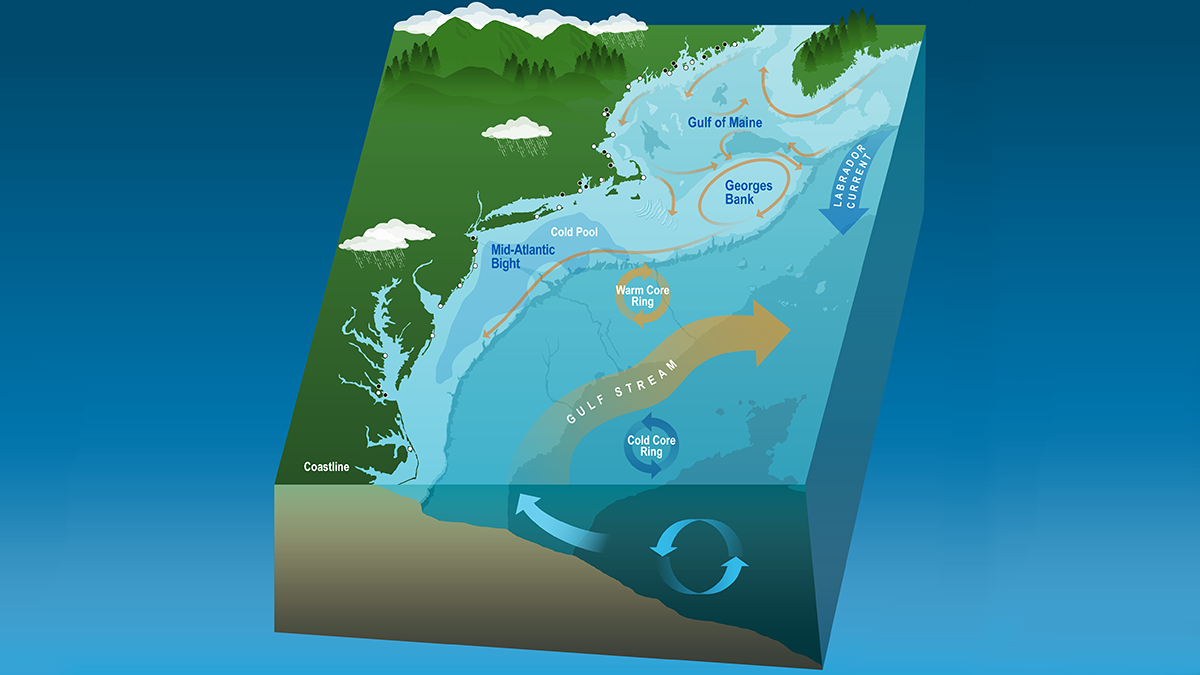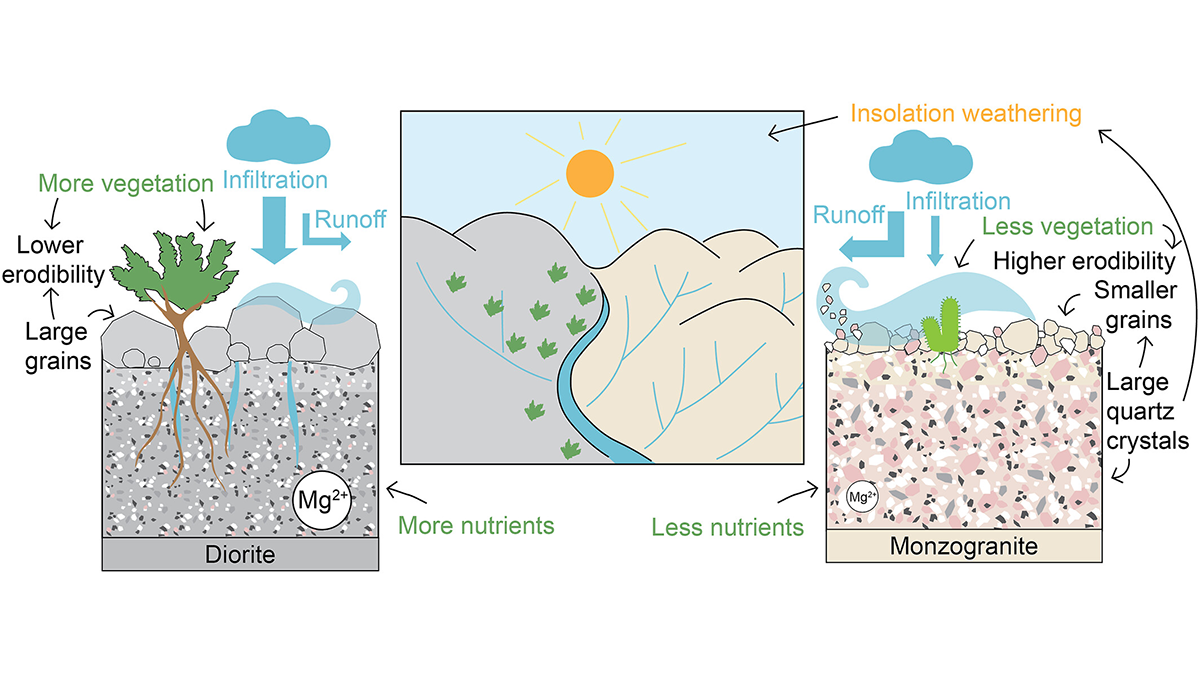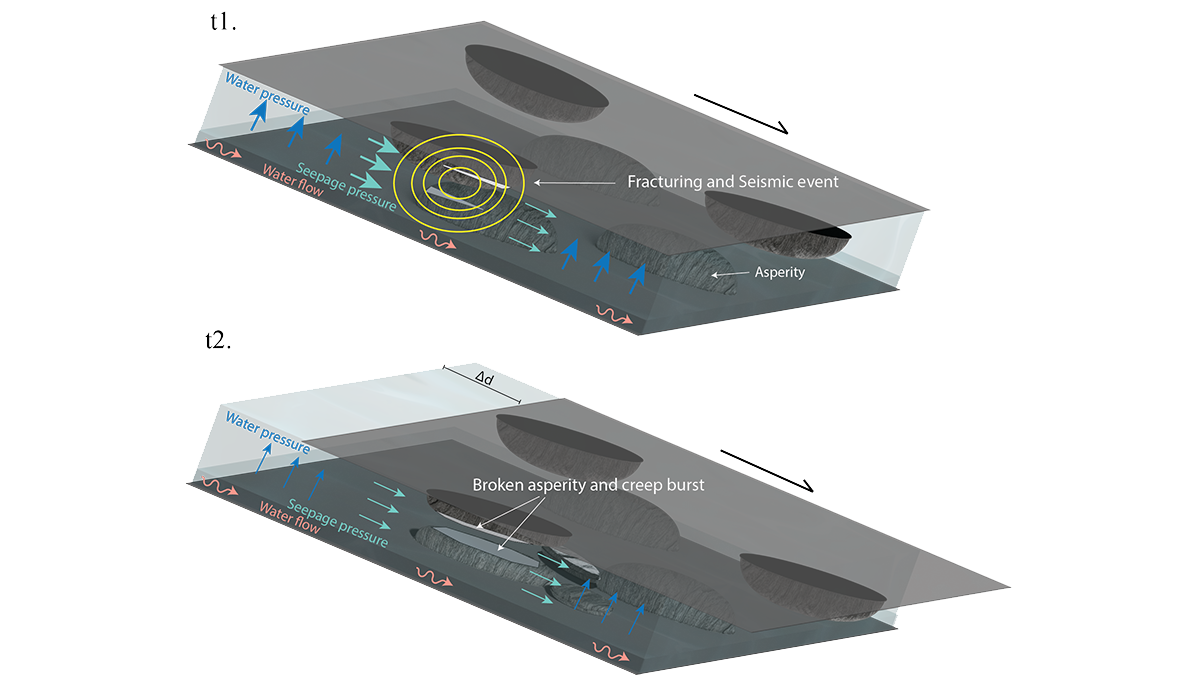A unique acoustic wave related to the generation of tsunamis could be used to enhance early warning systems.
Editors’ Highlights
The Pulsed Pace of Glacial Erosion
New data from Lago Argentino, Patagonia reveal that glacial erosion occurs in discrete pulses, which challenges previous ideas that erosion rates have increased over time due to climate change.
Impacts of Urban Heat and Friction on a Tropical Cyclone
A new computer modeling-based study demonstrates dual mechanisms that reduce pre- and post-landfall tropical cyclone intensity.
Ice boost! Why Rock Avalanches Containing Ice Travel So Far
Researchers identify a new mechanism that allows avalanches containing a mixture of rock and ice to travel very long distances.
Coastal Dynamics Revealed by Satellite Salinity Data
One decade of high-quality satellite salinity observations provide valuable insights into the complex dynamics in the Mid-Atlantic Bight.
How Rock Type Shapes River Networks and Influences Landscape Evolution
A new study in Chile shows how small differences in rock type can drive large differences in erosion, vegetation, and river networks, illuminating the role of mineralogy in shaping landscapes.
Characterizing the Space Between Clouds and Clear Sky
The area near clouds is often classified as ‘clear sky’, but a new study demonstrates the potential biases of misclassifying these transition zones and their significance for Earth’s energy budget.
Will It Run Away? Documenting Creep Bursts in a Slow-Moving Landslide
After 11-years of monitoring a slow-moving landslide and its shear zone in Norway, scientists reveal a complex pattern of creep bursts that require a rethink of the driving mechanisms.
Which Greenland Outlet Glaciers have Subglacial Channels?
A new study provides insights into where the channels that drain subglacial water from underneath the Greenland Ice Sheet are most likely located.
Three Studies Point to El Niño as Key to 2023 Record Global Heat
Three recent studies reveal how the interplay between El Niño and long-term global warming drove the record-breaking global temperatures of 2023.










